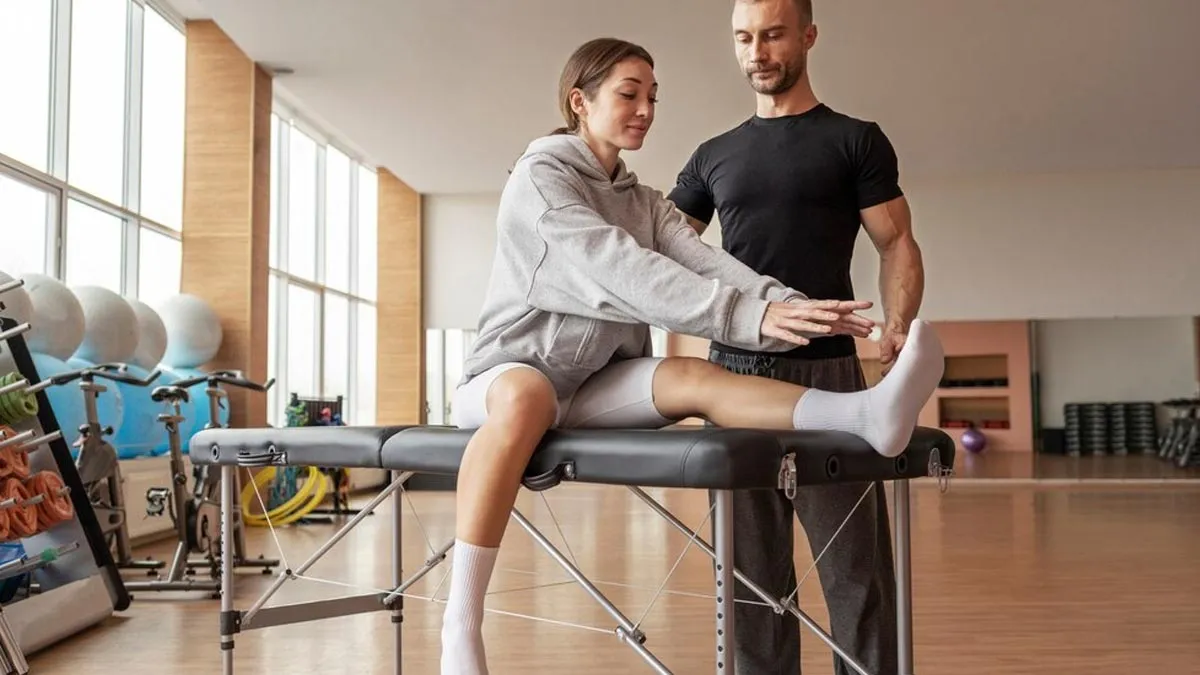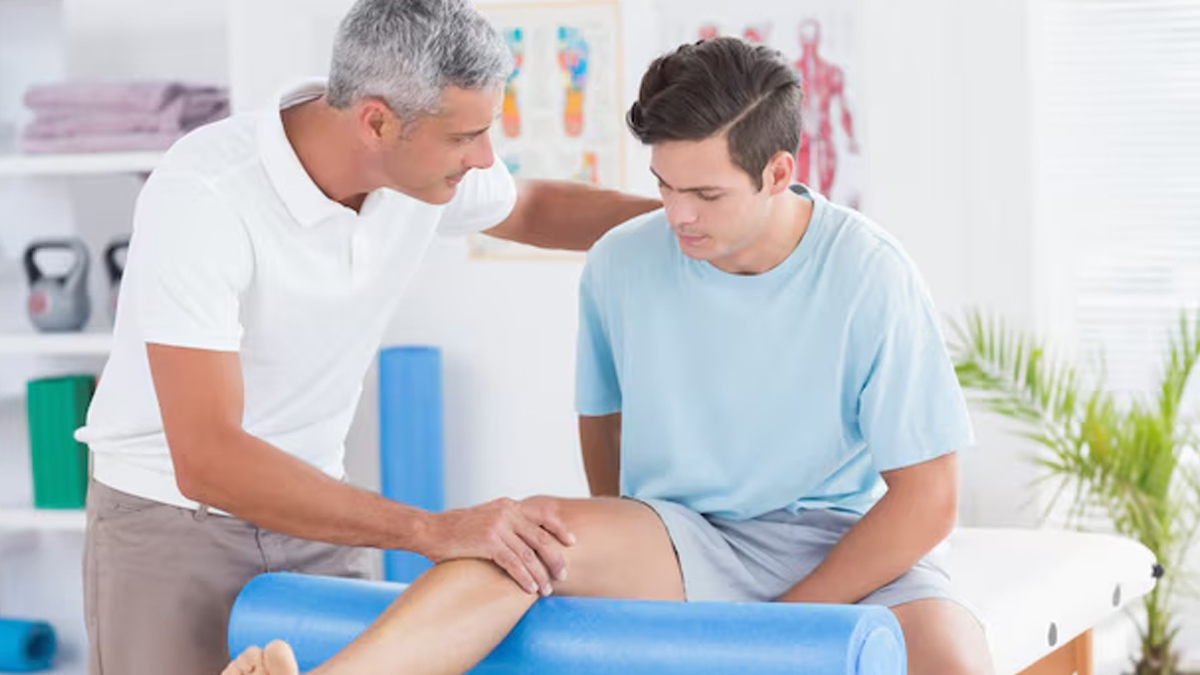
One surgical technique for locating and treating problems with the knee joint is knee arthroscopy. An arthroscope, a tiny camera, is inserted into the knee by the surgeon after making a tiny incision.
Table of Content:-
This enables the surgeon to view the joint's interior on a monitor. After that, they can use the tiny tools that come with the arthroscope to check for any knee issues and, if required, fix them.
Many knee issues, such as a torn meniscus or an incorrectly placed patella (kneecap), can be detected by arthroscopy. It can also be applied to fixing the ligaments in the joint. The risks associated with the operation are low, and most people have a relatively positive prognosis.
Your prognosis and length of recuperation will depend on how serious your knee problem is and how complicated the required treatment is. To curate a post-recovery precautions and exercise guide, the OnlyMyHealth team spoke to Dr. Manish Dhawan, Senior Consultant, Orthopaedics, Sir Ganga Ram Hospital, New Delhi.
RELATED: ACL Vs MCL Tear: What Is The Difference And How Treatment Differs
What Happens After A Knee Arthroscopy?
-1737354823867.jpg)
After your knee arthroscopy, you start the rehabilitation process right away. Within a week of your knee arthroscopy treatment, scheduling a follow-up visit with your surgeon is one of the first things you should do. Your healthcare physician will set up routine follow-up appointments after the initial follow-up to track your recovery.
While subsequent visits will be more widely spread out, appointments are often more frequent during the first few weeks of your knee arthroscopy rehabilitation. After the procedure, you will usually see your surgeon one last time about a year later.
Post-Surgery Phase (1 Week)
“After undergoing knee arthroscopy, you should anticipate a gradual improvement in your range of motion and strength while being cautious not to overexert yourself, as excessive activity may damage the repaired graft.” says Dr Dhawan. He then adds,”There are designated exercises tailored to different stages of recovery.
Short-Term Recovery Phase (1-3 Weeks)

Dr Dhawan says, “In the initial recovery phase, which occurs right after surgery during the first 3-4 weeks, applying ice to the knee and elevating it on a pillow is recommended.” He notes that patients are required to walk using crutches with partial weight-bearing.
"You should initiate knee range of motion exercises, such as straight leg raises, ankle pumps, and slowly bending the knee joint. However, it’s crucial to protect your knee by avoiding full weight-bearing and any exercises not specifically prescribed", says our expert.
Straight Leg Raises
- Place yourself on your back with your uninvolved leg's knee bent.
- Fully extend the involved knee. Raise your leg about 6 inches off the ground gradually, then hold it there for 5 seconds. Make sure your toes are facing up.
- Continue lifting, holding each lift as you go, in 6-inch increments.
- To get back to the starting position, lower your leg once again.
- Repeat this ten times in total.
Intermediate Phase (4-6 Weeks)

Dr Dhawan says, “During the intermediate phase, which starts around two weeks post-surgery, you can return to normal walking, initially using a walker or crutches. Low-impact exercises such as heel slides, hamstring sets, and calf raises can also be introduced. Swimming can be resumed after 6 weeks following the surgery.”
Hamstring Sets
This exercise should be performed without moving.
- Sit or lie down with your knees bent about 10 degrees.
- In order to tense the muscles in the back of your thigh, press your heels into the ground. After five seconds of holding this position, release the tension.
- Do this ten times.
Heel Slides
- Bring your heel as close to your buttocks as you can.
- You should only bend your knee as far as it feels comfortable.
- It shouldn't hurt, although you might feel a little pressure or anything around your knee.
- Do one to three sets of ten repetitions for every exercise. Take a minute or more to relax in between sets.
Try to perform these exercises two or more times a day.
Final Recovery Phase (Week 6 Onwards)
Dr Dhawan notes, “As more time passes, you can begin adding weights to the knee and performing range of motion and quadriceps exercises. It is particularly important to be cautious following anterior cruciate ligament surgery due to the presence of a graft.”
Continue performing any physical therapy exercises that have been recommended to maintain knee strength and flexibility. Secondly, reintroduce activities gradually without exerting yourself too much. Most importantly, always get your doctor's approval before starting any new physical activity.
Precautions To Take After A Knee Arthroscopy

Patients are advised to refrain from running or engaging in contact sports for 6-9 months post-surgery, according to Dr Dhawan. Massachusetts General Hospital, Sports Medicine suggests the following precautions one should take after an arthroscopy.
- Steer clear of limping and walk on your heels.
- After surgery, stay away from long walks for four to six weeks.
- To reduce discomfort and swelling, keep applying ice to the knee. Ice the knee for 15 to 20 minutes three times a day, and to avoid damaging the skin, always place a towel or piece of cloth between the skin and the ice.
- To help control swelling, you can apply an elastic bandage (ace) on the knee if needed.
- Avoid supporting your knee with a pillow for comfort as this can make it stiff.
Also watch this video
How we keep this article up to date:
We work with experts and keep a close eye on the latest in health and wellness. Whenever there is a new research or helpful information, we update our articles with accurate and useful advice.
Current Version